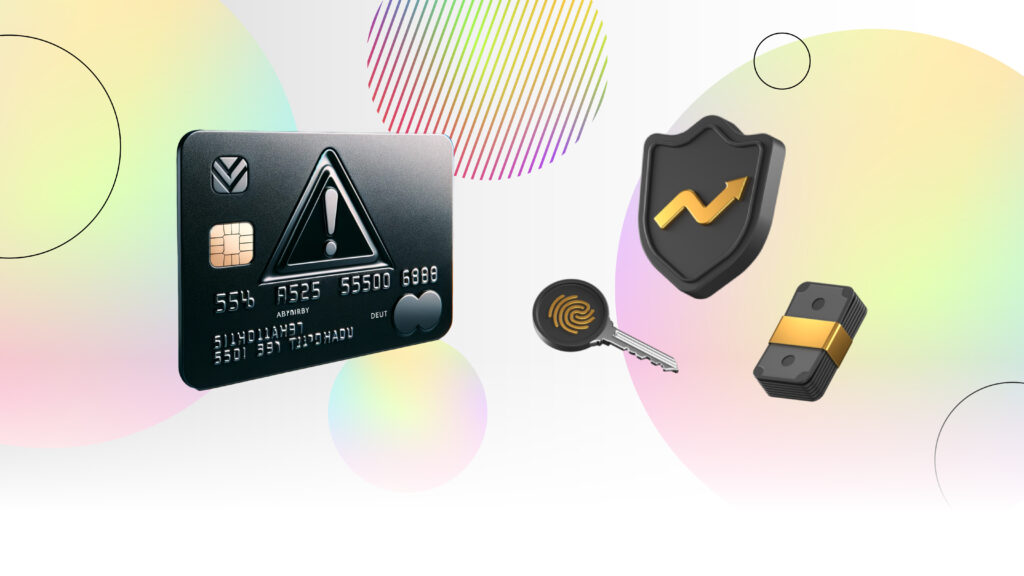Learn how to create stock trading software, offering users a digital platform to buy and sell stocks, bonds, and more. Trading software equips investors with analytical tools, trade execution, and portfolio management features, making finance a more inclusive sphere. What’s more, it can bring you a fast return on investments if you choose the suitable monetization model. Continue reading to find ways to craft a profitable stock trading app in 2024.
Content:
- What is stock trading software?
- Why develop stock trading software?
- Planning the development
- Technical aspects of stock trading software development
- Security measures
- How do you monetize your trading app?
- Future trends in stock trading software development
What is stock trading software?
Trading software is an online tool that lets people buy and sell things like stocks, futures, and bonds. It allows users to analyze the market, make trades, exercise currency options, and keep track of their investments. This software is made for everyone, from beginners using simple apps on their phones to experts using more complicated systems with special features for analyzing and automatic trading.

Why develop stock trading software?
Trading software plays a big role in the financial world. It makes it easier for anyone to enter the stock market using a computer or phone without needing a traditional broker. This software helps make the market work better and faster, giving people all the data and tools they need to make smart choices.
What’s so beneficial about trading software?
- It is convenient and accessible. You can trade from anywhere with an internet connection, which eliminates the need for phone calls or physical visits to brokers.
- You receive real-time data and analysis. You can access live market data, charts, and technical indicators.
- You can easily manage your trades. Place various order types, monitor open positions, and manage your portfolio in a matter of minutes.
- It is automized and customized. You can utilize automated strategies and customize platform features to suit your individual trading style.
- It helps you learn and stay updated. You can access news, analyst reports, and educational resources to be aware of Forex trends and investment opportunities.
Key concepts, features, and functionalities in stock trading app development
A well-designed trading app should offer a range of features and functionalities to meet the needs of its users, providing them with the tools and information necessary to make informed trading decisions. Here are some of the key concepts that are critical for a stock trading app.

These features are designed to provide users with a comprehensive and intuitive trading experience, and we will describe them in more detail further on while explaining how to make a stock trading app.
Types of trading software
Trading software can be broadly categorized into two main types: proprietary platforms and third-party platforms. Let’s compare them broadly.
| Proprietary trading software | Third-party trading software | |
| Definition | Developed and used exclusively by a single brokerage. It’s custom-built to meet the preferences of the company’s client base or to capitalize on its unique trading strategies. | Developed by an independent company and made available to the users of multiple brokerages. Designed to be compatible with a wide range of brokers and offer standardized trading tools and resources. |
| Features | Offer unique tools, features, or data that are not available on other platforms. They may include advanced charting packages, proprietary indicators, or specialized trading algorithms. | Provide a broad array of trading tools, including market analysis, charting tools, news feeds, and more. They are designed to cater to a wide audience, from beginners to advanced traders. |
| Pros | Since the software is developed for in-house use, it can be highly customized to fit the trading style and requirements of the users. It often provides a more integrated trading experience with the company’s other services. | Wide availability and compatibility with various brokers which allows traders to choose the best broker for their needs without being tied to one due to software limitations. These platforms often have large user communities, offering extensive support and shared resources. |
| Cons | Limited accessibility – it’s only available to the company’s clients that developed the software. Also, updates or enhancements might be less frequent than more widely used third-party solutions. | While offering broad functionality, third-party platforms may lack the deep integration or specialized features that proprietary software can offer. Users might also find that some advanced features require additional subscription fees. |
Planning the development
Stock trading app development is a complex process and might require careful planning to meet its users’ needs and comply with regulatory standards. Where should you start? Ask yourself these four questions first.
1. What’s my target audience?
The primary users of stock trading software can be categorized into three groups.
Retail traders are individuals who trade their own money, often with less complex needs but requiring intuitive and user-friendly interfaces.
Professional traders are people or small teams trading professionally, needing advanced charting, analysis tools, and faster execution.
Institutions are larger entities such as banks, hedge funds, and asset management companies, requiring robust, scalable solutions with deep market analysis, high security, and compliance features.
2. What are the scope and requirements of my MVP trading software?
Align your software’s scope with your target audience’s needs. Essential features of trading software include:
- order placement and management
- real-time market data and charting
- portfolio tracking and analysis
- news and research integration
- security and regulatory considerations
3. What technology stack am I going to use?
Consider this stack as your first choice and amend it if necessary.

- Programming languages: Python, Java, C++, C#
- Front-end frameworks: For creating a responsive and engaging user interface, use React, Angular, or Vue.js
- Back-end frameworks: For processing trades, managing data, and integrating with market data feeds, try Django, Spring Boot, Node.js
- Database: Use reliable databases like PostgreSQL or MongoDB to store user and transaction data.
- Data visualization libraries: Matplotlib, Plotly, Chart.js
- Cloud services and financial data APIs: Use cloud services for scalability and financial data APIs like IEX Cloud, Polygon.io, or Alpha Vantage for real-time market data.
- Testing frameworks: JUnit, Mockito, Selenium
4. What development approach am I going to choose?
Deciding on the development approach is a strategic decision that will impact your project’s cost, timeline, and quality.
In-house development offers complete control over the development process, ideal for companies with the necessary resources and expertise.
Outsourcing can be cost-effective and allow access to specialized skills, but it requires effective communication and management to ensure quality.
Existing APIs and libraries speed up development thanks to pre-built functionalities for market data, charting, and more, though it may limit customization.
Looking for an in-between option? Staff augmentation can be your choice! Hire unique specialists with stock trading software development backgrounds and cut direct labor costs by choosing regions with lower wages.
Technical aspects of stock trading software development
Developing stock trading software involves an integration of a couple of technical components. They ensure your software provides accurate data and offers comprehensive analysis. Here are some of the key technical aspects to consider.
Market data integration
It provides users with real-time and historical data on stocks, currencies, commodities, and other financial instruments. Data can be sourced from financial stock market data providers such as Bloomberg or Thomson Reuters. Many exchanges also offer their own data feeds. Real-time data is typically accessed via WebSockets for live streaming, while historical data can be retrieved through RESTful APIs.
Order execution
It is the core feature that allows users to buy and sell financial instruments through the platform. For these purposes, your software must integrate with broker APIs to execute trades on behalf of the user. This requires establishing secure and reliable connections to brokerages, often requiring OAuth for user authentication.
Analysis tools
To provide users with advanced analysis tools, consider the integration of technical indicators like moving averages, RSI, and MACD. Offer dynamic, customizable charts that allow users to view and analyze market data over different time frames. Enable your clients to test their trading strategies against historical data to assess their effectiveness before applying them in real markets.
Account management
Effective account management features ensure users can easily manage their investments and track their performance. This includes user profiles, balance tracking, and order history.
Security measures

Due to the sensitive nature of financial transactions and personal data, ensuring security and compliance are so important in developing stock trading software. Here are key measures you should include in your MVP:
- Data encryption and protection of user information. Utilize strong encryption algorithms for data at rest and in transit to protect user information and financial data from unauthorized access or breaches.
- Regulatory standards and guidelines. Compliance with financial industry regulations, such as GDPR for data protection, SEC rules for trading, and FINRA regulations, ensures that your software meets legal and operational standards.
- Secure authentication and authorization. Incorporate MFA, biometric verification, and secure session management to safeguard user accounts and prevent unauthorized access.
How to monetize your trading app?

Check out five common monetization models that will help you achieve ROI faster.
- Subscription. Charge users a monthly or yearly fee for access to your software. This model can provide a steady revenue stream and can be tiered based on the features or services offered.
- Commission. Earn a commission on trades executed through your software. This model aligns your success with the activity level of your users.
- Freemium. Offer a free basic version of your software, with the option to upgrade to a premium version with additional features. This model can attract a large user base and convert a portion to paying customers.
- Advertising. Generate revenue by displaying ads within your software. This can be particularly effective if your software has a large base of free users.
- Paid features. Offer specialized features or add-ons for an additional fee. This allows users to customize their experience and only pay for what they need.
Future trends in stock trading software development
How to develop stock trading software that stays profitable? Keep up with innovations and be the first to use new technologies able to minimize your costs and improve the UX of your clients. These are three trends Unicorner believes will rule the niche in 2024.
1. Integration of Artificial Intelligence
The integration of AI in stock trading software has revolutionized how market analysis and trading decisions are made. AI applications include automated trading systems, algorithmic trading, personalized recommendations and insights, chatbots, and virtual assistants.
2. Mobile-first approaches
A mobile-first approach prioritizes the development of trading software for mobile devices, acknowledging the growing trend of users preferring smartphones for trading activities.
3. Blockchain and decentralized finance (DeFi)
Blockchain-based platforms could enable secure and transparent trading of digital assets, fractional ownership of securities, and streamlined regulatory processes. Integration with DeFi protocols could allow users to access a broader range of investment opportunities, potentially bypassing traditional intermediaries and reducing costs.






